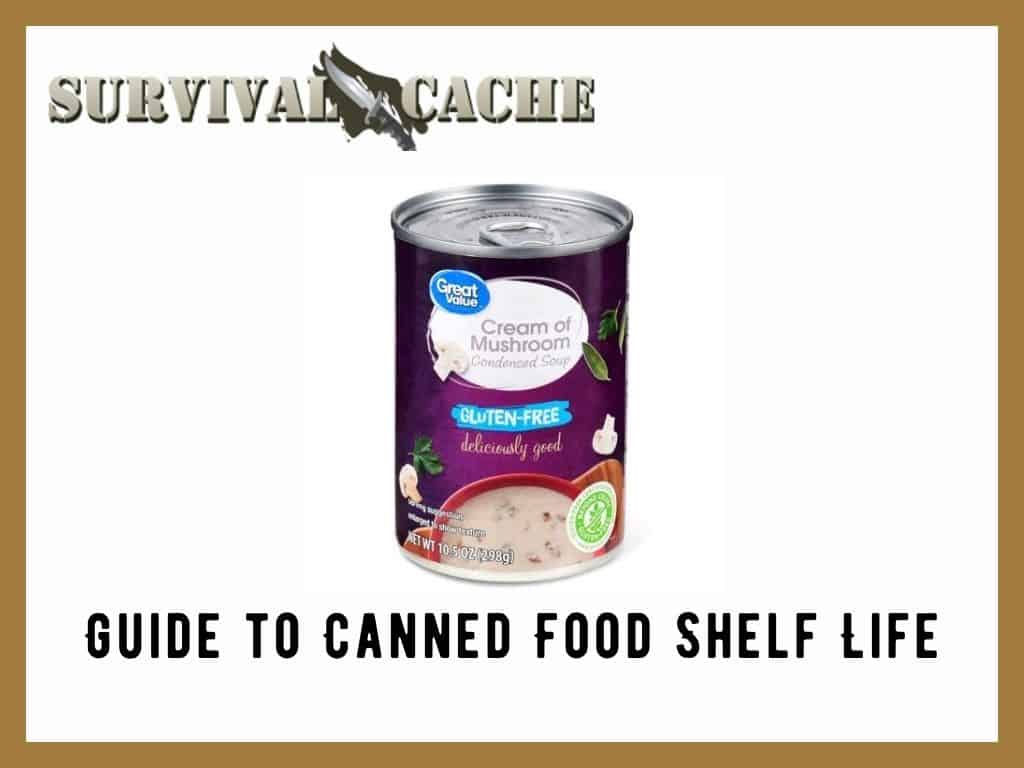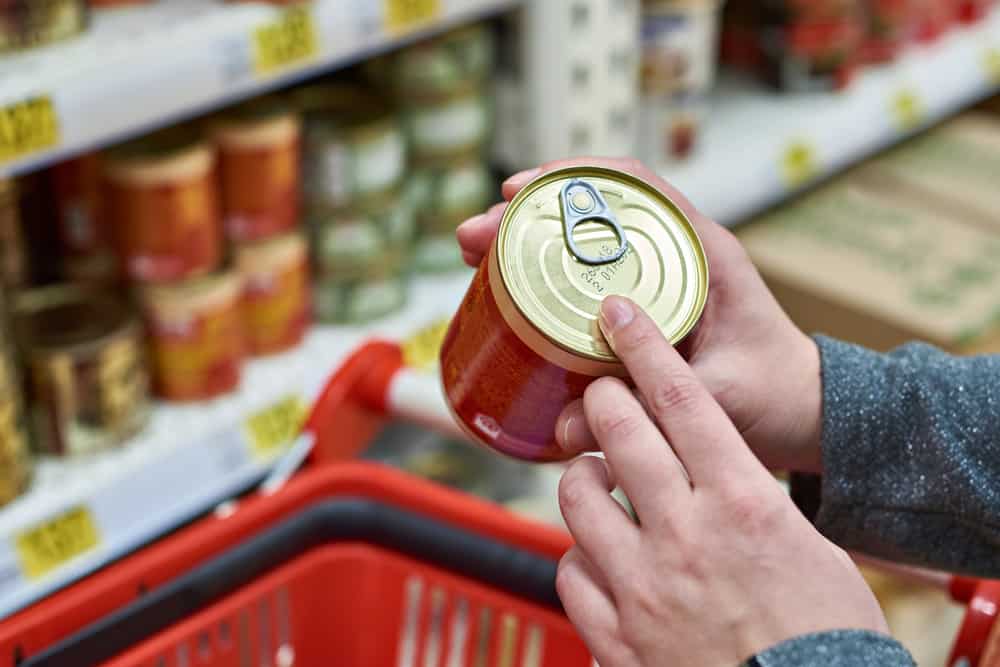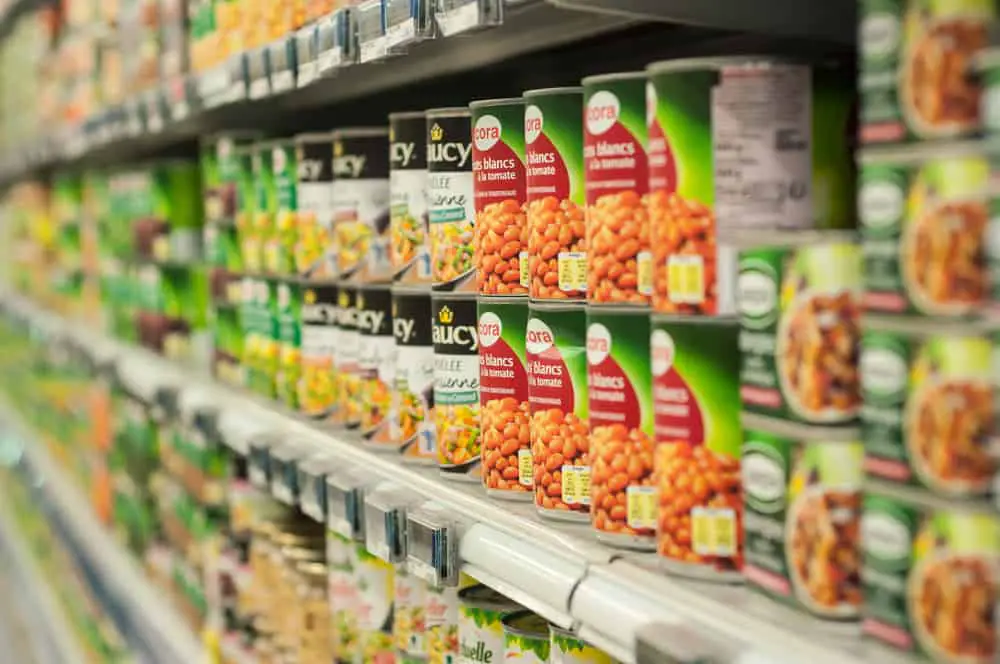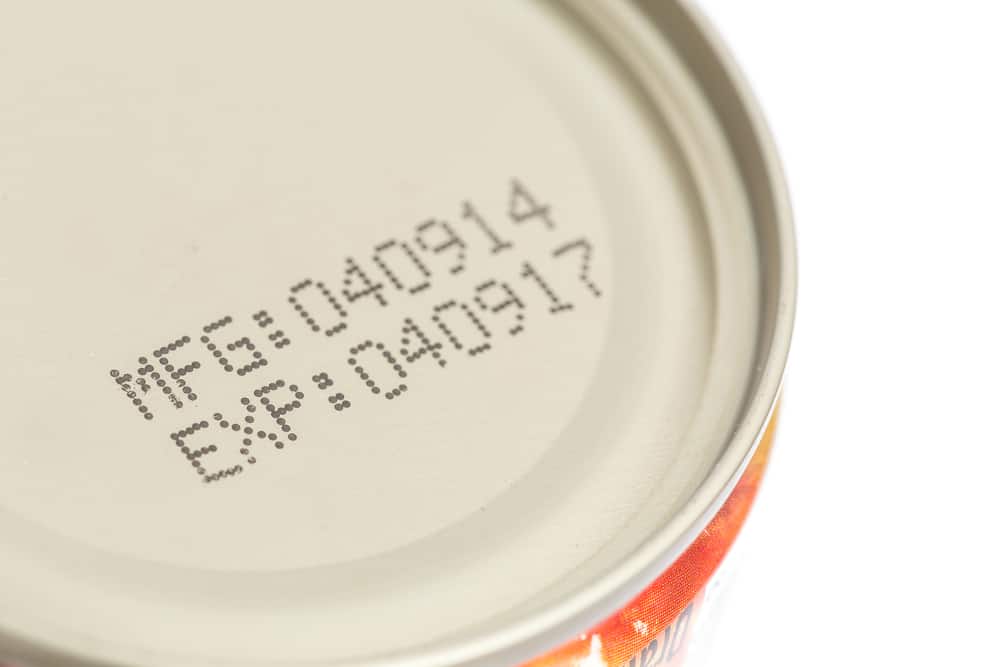If you’re looking for an excellent addition to your long term food storage space, then you should contemplate adding in canned foods.

Among nearly all preppers, canned foods are by far and of the most popular sought after strategies of building up their food storage, including myself.
If you’re new to this area of prepping, you should know that there are generally two types of canned food. Store-bought and homemade. I’ll cover these more in-depth later on.
This is awesome because having the ability to purchase pre-canned food and make your unique recipes opens up countless opportunities for long term food storage.
A question that gets asked often are the better ways to store canned foods and how long they typically last.
I’ve been through this challenging period myself, and luckily for you, I’ve written a thorough guide to take away the homework. Let’s take a look.
SKIP AHEAD
Types of Canned Food
Store-Bought

If you’re looking to start adding canned foods to your prepping stash, it’s more than likely going to be purchased from a store. Most of my canned foods are also bought from big box stores.
I think the reasoning behind this for most people, including myself, is the fact that it’s so easy to stop by the local store and grab five or ten cans on occasion to add to the stockpile.
The shelf life is extraordinary, commonly lasting 2-3 years minimum according to the label, although the actual lifespan can climb into the decades.
Plus, they’re typically super affordable, which means you won’t have to break the bank just to ensure you have food during a SHTF situation.
Homemade
This involves canning your food, and it’s a prevalent method used by veteran preppers. The popularity likely stems from the ability to can just about any food you’d like. I’ve canned venison, beef, many vegetables, and fruit, plus much more.
The processing is relatively easy. You’ll just need a quality Mason jar or something alike, then follow the steps listed here. Similarly, canning your food means you’re in control of what goes in and what doesn’t.
I recommend that it consists of high-calorie foods with plenty of protein and carbs. The only minor downside to this is the possibility of breaking the jars (such as in an earthquake).
This brings a much higher chance of breakage versus the more common aluminum found in store-bought cans.
You certainly should also keep in mind that the shelf life of homemade canned goods is typically one year, so you should rotate them occasionally.
Packets
If you’re looking for something that takes up less room than store-bought or homemade cans do, packets are a special consideration.
They’re generally very thin and pack a healthy punch of energy-boosting contents. I often purchase tuna packets, which usually have a shelf life of 2-3 years.
I know these aren’t real cans, neither are mason jars, but they’re a great addition to any cache of food. They’re incredibly effective for backpacking, better known in the prepping community as the “bug out bag.”
It’s worth it if you think venturing away from your home headquarters is a chance, as having a backpack full of heavy cans of food is a nightmare.
How To Store and Prolong Canned Food Shelf Life
Rotate Them
This is perhaps the best way to ensure the longevity of your stored canned goods. Typically, canned goods have a shelf life of 2-3 years.
However, this doesn’t necessarily mean they’ll immediately go bad the day after the “best by” date passes. Believe me; this won’t matter if you’re in a SHTF scenario with no other food available.
Nevertheless, rotating your canned goods will ensure that you continuously add fresh, canned goods to your stockpile; this way, you’ll always have the freshest food possible if a SHTF scenario were ever to occur.
An excellent example of this would be to consume ten cans out of 100 cans per month; this way, each month, ten new cans are added, and ten older cans are consumed, keeping your stockpile fresh.
Store In A Dark Area
I feel like this is just as significant as any other safeguards listed here. Cans are frequently made of aluminum or other food-safe metals.
Yes, the companies who canned the goods typically take significant precautionary measures to ensure the safety of the can, but this doesn’t make them invulnerable to the elements.
First of all, heat can cause the can to seep certain elements into the food, which is something we want to prevent, not to mention the heat negatively affecting the food inside of the can.
Storing the cans in a dark room will prevent any natural light exposure and avoid direct sunlight, which would lower the shelf life considerably.
Provide Consistent Temperatures
As noted previously, the cans used to store the food are made out of aluminum or other metals, and if left in extreme or even moderate heat, can leak toxic materials into the food.
This is atypical with colder temperatures, but incredibly frigid weather can make the cans extra susceptible to becoming fragile.
I think it’s essential to store the cans in a dry area because moisture can lead to oxidation and rust to the can, destroying all of the contents inside.
A valuable thing to remember is always to keep the cans in a climate with a consistent temperature.
Inconsistent temperatures that regularly fluctuate can cause the food inside to go bad much faster than otherwise. You should note that freezing canned goods should be off-limits.
Canned goods that are frozen will lose a considerable amount of its shelf life, even if it’s thawed out rapidly, whether it be frozen within a freezer or by natural temperatures such as in a snowstorm.
A Few Tips…
Never Cheap Out

I see many novice Preppers purchasing a bunch of cheap canned goods that contain nothing more than green beans or lettuce.
While these may be delicious to eat with other food, these kinds of canned goods will not be sufficient in a disastrous situation, primarily if it’s long term.
If you intend to stock up on canned goods, it would be best if you purchased canned goods that contain high-calorie content.
In a SHTF situation, you’re going to need your energy, and a can of green beans or peas isn’t going to cut it.
It’s reasonable to store a few of them, but I highly discourage stocking up on these low-calorie options. It’ll be a little more costly, but you’ll appreciate the wholesome meal vs. the contrary.
Never Buy Dented Cans
I remember when I initially started stocking canned goods that a local store (a “mom and pop shop”) would discount the dented cans. I’ll admit I was briefly very tempted to buy them, as they were less than half the price of all the others.
This is, however, a very bad practice to do. Cans that are dented may cause flakes to fall into the contents of the can.
The worst part is that canned goods contain a protective layer inside, and when a can is dented, this layer can be broken through, allowing the aluminum to penetrate the food inside.
This may not affect it short term, but this would have consequences if left this way long term, which is why I recommend that you avoid purchasing these.
Not to mention, if you ever need to barter during a real SHTF scenario, no one is going to want to trade their coffee for a dented can of peas that could lead to even more dangers.
Open Questions about Canned Food Shelf Life
What About The Dates?

Determining if the food inside of a can has spoiled or not isn’t that difficult. First of all, let’s talk about the expiration or best by date.
These dates are commonly placed on the can as a rough estimate of when the contents will expire. However, they’re not the determining factor of establishing if the food is still edible.
Many people online regularly eat cans that are 50-100 years old; mostly cans that are military issued, usually done as a challenge.
The coolest part about this is that specialists test several of these cans for toxins within the food. Frequently, the food is still entirely edible and keeps much of its initial nutritional value.
Eating canned goods after the expiration date isn’t completely risk-free, but the vast majority of the time, as long as the can was stored correctly, it will likely be just fine to eat, even a decade later. Use your best judgment.
How Do I Know It’s Safe To Consume?
There, unfortunately, isn’t a sure way of knowing this, especially if it’s considerably past its expiration date. However, using your natural senses will serve just fine.
Firstly, open the can and take a big whiff at the food. If it still has a rich aroma of what you would expect the contents to smell like, this is an excellent sign that it hasn’t yet spoiled.
The next step would be to examine the food itself. Does it look abnormally colored or have a bizarre appearance? For example, if it were Lima beans, yet they appeared murky brown, this is a bad sign.
However, if the appearance is what you’d expect them to be, then it’s likely still edible. The next step to this is to examine the interior of the can itself.
Make sure it hasn’t eroded whatsoever. If it’s smooth and has no areas that are brittle or oxidized, you’re in good shape.
How Do I “Can” My Food?
This method is pretty simple to do and doesn’t require much to get started. For a more in-depth guide, please visit here. I’ll go over the basics in this guide, however.
The first step involves preparing any food as you were about to eat it. Then, place it inside the mason jar at rim level while attempting to get as many air bubbles out as feasible.
At this point, place the lid of the mason jar on the can and tighten it conservatively; it should be tight, but neither too loose or too tight. After this, you’ll put it in a water bath at 180 degrees Fahrenheit.
The process of placing the jars in the water bath will seal the jars, creating a suction of the lid inside. You can quickly determine if this has happened by simply looking at the lid itself.
If the lid appears to have been slightly pulled in, then you’ve successfully canned food. You can place virtually any type of food you’d like, but keep in mind that acidic foods work best.
Verdict
If you’re new to prepping or you’re even a veteran prepper, and you’re looking to up your food storage game, canned goods are one of the best choices available.
They offer a meal that often does not require to be cooked, plus they’re very portable and easy to stock.
Homemade recipes that are personally canned at home offer a delightful meal that may be cheaper than buying canned goods at the store.
You’ll find that this is especially useful if you can get some good deals on a bunch of mason jars. I know from experience that canned goods often have many additional years past their best by date before they turn inedible.
If you plan on storing canned goods, make sure to position them in a dark, dry, cool area to provide additional time to the lifespan of the food.
While you’re at it, stock up on a few quality can openers or knives with a can opener attachment; this way, you’re not stuck without an easy way to open all of the cans.
Nevertheless, storing canned food is undoubtedly at the top of the list for myself and numerous other preppers, so you’re already at a tremendous start at beginning or continuing your prepping lifestyle by storing canned goods.

